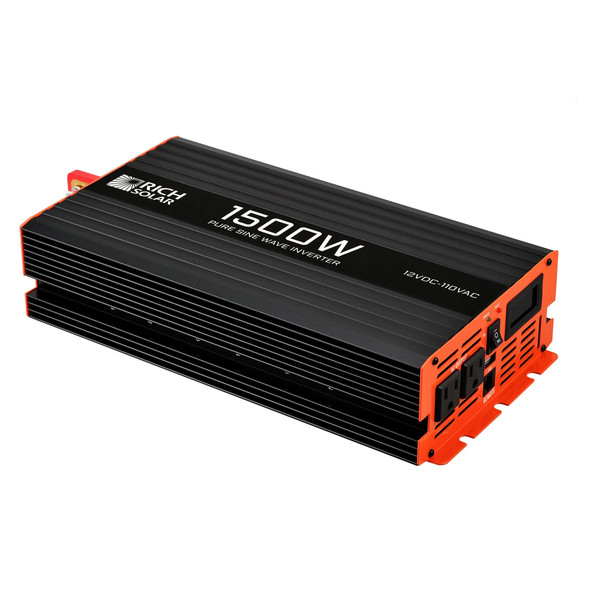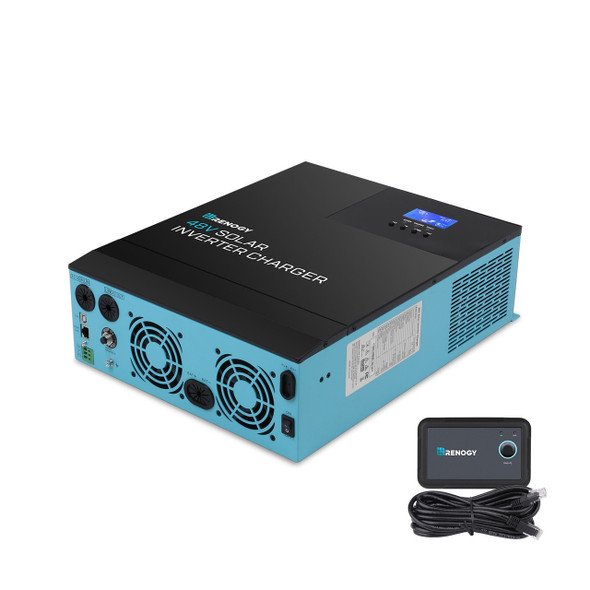Inverters are often overlooked in RVs and trucks, but they are very important. If you are camping in a location that doesn’t have electrical hookups and you have a computer, TV, AC unit, microwave, or several other appliances, you’ll be needing an inverter. For truckers, drivers, and towing vehicles, having an inverter can allow for the use of a minifridge or other convenient appliance to use on the road. Having an inverter in your rig, no matter whether you’re driving a truck or an RV, allows you to use electronics while on the go and at the campground and it allows you to use your battery power to power appliances without the need to run a noisy generator.
What is an RV inverter?
RV inverters are electrical modules that change incoming DC current from the battery into usable AC current for various appliances and other devices plugged into outlets. Inverters allow people using an RV off-grid to access power without using a generator or shore power. They can also be used with a solar power system to convert that solar power into usable AC power. Inverters are often confused with converters. While both are meant to change the current from one mode to another, an inverter changes DC into AC to be used in the outlets and converters change AC into DC to power items that run off of the DC direct power system. Dual units have both inverters and converters built in, allowing you to have both units in one.
There are three main types of inverters. A square wave inverter is older and has mostly been replaced by newer models. It can power smaller appliances and tools, but it’s limited by what items it can sufficiently run. A pure sine wave inverter is generally considered the best option, as they provide the cleanest source of power and can support a higher amount of appliances. These are very popular and are generally more expensive as well. If you have a bunch of appliances or devices to run, though, this is your best bet. Modified sine wave inverters consume more power from the batteries and devices might not run as well on them. They are growing in popularity, though, as their technology is improving to increase efficiency at a lower cost.
How do I find the right inverter?
There are several considerations to make before purchasing an inverter. First, you’ll need to know how much power you need it to run. Do you need just enough power to charge up a few devices or do you need enough power to run a whole kitchen? Next, it’s helpful to find an inverter with as many safety features as possible. Try and find one with overheating protection, overload protection, over- and under-voltage protection, power surge protection, and short-circuit prevention.
Then, keep in mind ease of installation. Some inverters are larger than others or have brackets that can make it easier or harder to install it. If you have a space intended for the inverter, make sure that it can be installed in that space. Also keep in mind whether you will be able to install the inverter or whether you will need to take your rig to an RV professional for installation. Finally, keep the size in mind. While some inverters are smaller, some are a bit large and they might pose a problem if you have a limited amount of space to install it in.
What are the causes of RV inverter failure?
The most common cause of inverter failure is an improper installation. Often, this comes as a result of a combination of not following the user manual recommendation and selecting inappropriate cable types, gauges, or in-line fuses. If you do install the inverter correctly, however, there are a few other things that you should keep an eye on. Look out for capacitor wear. Capacitors have a limited lifespan and they age faster than the dry components of the inverter. If you keep a consistent maintenance routine and replace these capacitors when they are worn, you can avoid potential problems in the future. Keep an eye out for signs of overuse as well.
Inverters have an operating limit and using them past this limit, either by choice or due to oversight or lack of knowledge, can contribute to inverter failure. Next, look out for over- and under-voltage spikes. If the current or voltage increases to a level that the inverter is not rated for, then it can cause damage to the componence, causing a shortened lifespan for the inverter. Finally, know that with use and time, electrical connections loosen and corrode. Make sure that these connections are maintained and replaced if need be to keep the inverter from reaching failure or causing issues in the future.
Should you leave your inverter on all the time?
The short answer to this question is no, you should turn it off when it’s not in active use. There are different situations, however, that influence this decision.
Keep it on if:
- If you want to use the AC appliances while traveling
- If you are expecting to lose power and you want to keep using the appliances
- If you are using a refrigerator that you don’t want to lose power
- If your inverter is a dual unit
- If you have items that you don’t want to lose the settings for (alarm clocks and microwaves with clock settings)
- If you are planning on charging your devices
Keep it off if:
- The manufacturer advises leaving their models off when not actively in use
- You want to conserve battery power
- You want to increase the lifespan of the inverter
- You don’t have any appliances that need constant AC power
- If you find it easier to run a generator rather than an inverter














